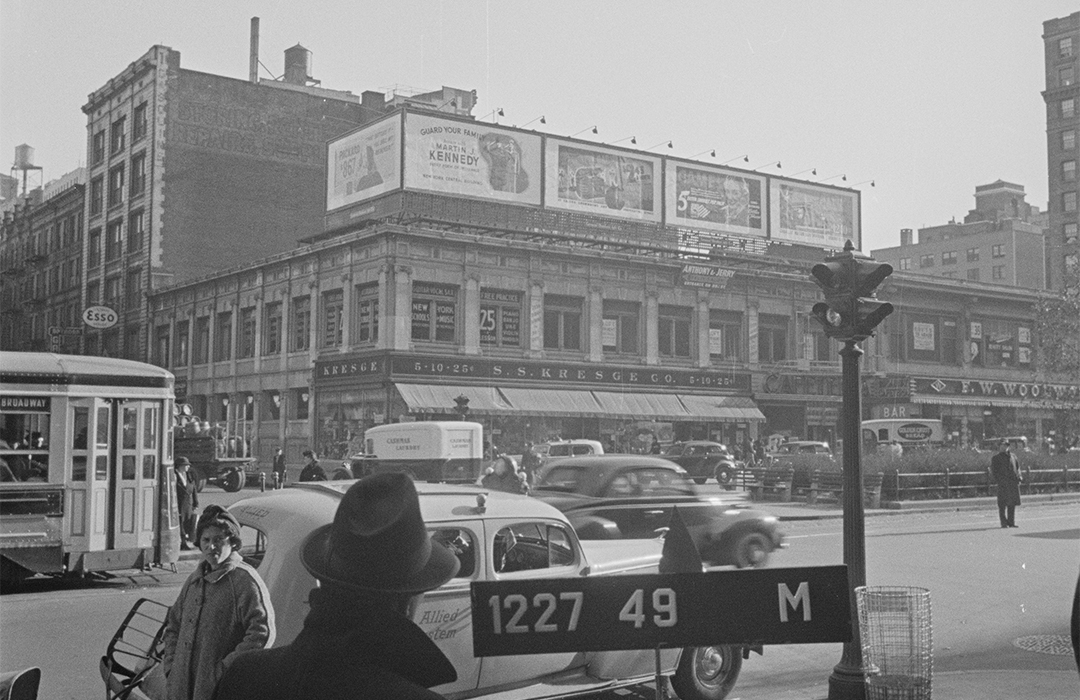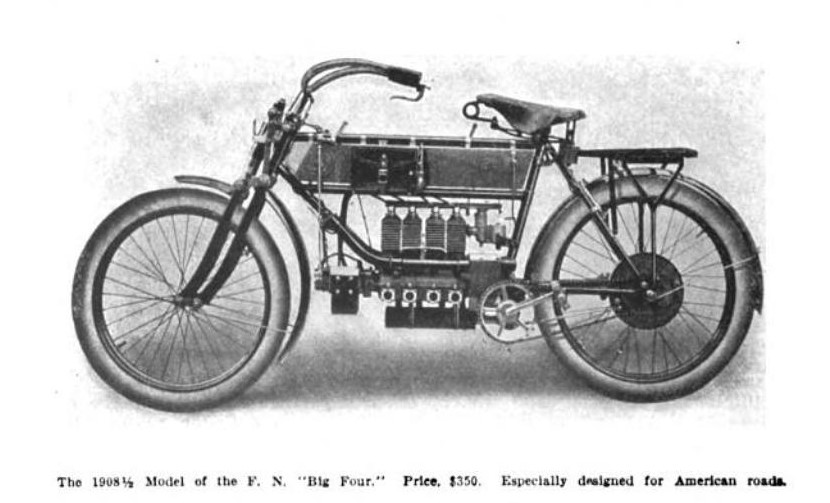
2228-2236 Broadway
by Tom Miller
The family of Daniel M. Edgar had owned the property at the southeast corner of Broadway and 80th Street for more than 75 years when he sold it to Gustavus L. Lawrence in November 1905. The 102-foot-long parcel would not remain vacant much longer. Lawrence commissioned architect George F. Pelham to fill the site with a two-story store and office building. Completed in 1907, its design was a commercial take on neo-Classical architecture, with Ionic pilasters dripping bellflowers from their capitals separating the upper floor windows. A dignified, paneled frieze ran below the dentiled cornice.
Broadway was known as Automobile Row at the time, lined for blocks with vehicle dealers and parts suppliers. On February 9, 1907, the Real Estate Record & Guide reported that Lawrence “has already leased his ground floor. The corner has been taken by the Auto Car Co. at $7,200 a year…and two out of his four tenants are automobile companies.” Before the end of the year, all of the ground floor tenants would be automotive-related. They included the Jones Speedometer Co., and the American Motor Car Sales Co. The latter advertised the Overland Runabout automobile for $1,250 that year, boasting, “A one armed person can drive an Overland.” Other tenants were R. T. Packham’s motorcar showroom and Ovington Motor Co., makers of the F. N. Motorcycle.
Before the end of the year, all of the ground floor tenants would be automotive-related.
The upper floors contained several offices and meeting spaces. On September 19, 1907, The Automobile magazine reported that the F. N. Motor Club of America “will hereafter be located at 2234 Broadway,” above the Ovington Motor Co.’s store. And six months later The Motorcycle Illustrated noted that The New York Motorcycle Club “is now located at 2234 Broadway.” The two clubs may have shared the same meeting space.
Not all the upstairs tenants, of course, were related to the automotive industry. In 1912 the city’s Department of Health leased space “as a branch registration office for the Division of Communicable Diseases.” The rent was $600 per year, or about $1,440 per month by 2023 conversions. The office remained at least through 1915.
Other second-floor tenants, here by 1911, were the studio of L. Schlessinger, “the prominent New York flashlight photographer,” as described by Abel’s Photographic Weekly; and the Theosophical Society, which operated the Church of Spiritualist Doctrine and would remain well into the 1920s.
In the meantime, the ground floor spaces continued to be leased by automotive firms. Among them were the Lewis Strang Supply Co., here by 1909; and the Anderson Carriage Company and Detroit Electrics in the building two years later. The latter was a dealer in electric automobiles. In 1915, another automobile supply dealer, the Weaver-Ebbling Automobile Co., moved in.
[in 1941] the five-and-dime store S. S. Kresge combined the entire stretch into a single commercial space.
But change was coming to Automobile Row by then. In 1913 the Harford Lunch Company opened a luncheonette at 2232 Broadway. And in 1915 the furniture store Nathan Greenberg, Inc. leased 2234. (It was a short-lived venture, however, and the company moved to East 39th Street the following year.) In 1920 Van Brink’s Auction Rooms joined 2234 and 2236 into one large space.
The series of ground floor tenants came to an end in 1941 when the five-and-dime store S. S. Kresge combined the entire stretch into a single commercial space. In what could be perceived as sexist to 21st century minds, the firm was looking for “fountain girls” in 1950. By 1960 S. S. Kresge was supplanted by a Food City grocery store.
The ground floor was divided into two stores in 1983. Zayre department store opened in the northern half. It was still there in 2011 when a Filene’s Basement opened in the southern store. It all ended in 2015 when the 108-year-old building was demolished to make way for a 19-story mixed use building.
Tom Miller is a social historian and blogger at daytoninmanhattan.blogspot.com



